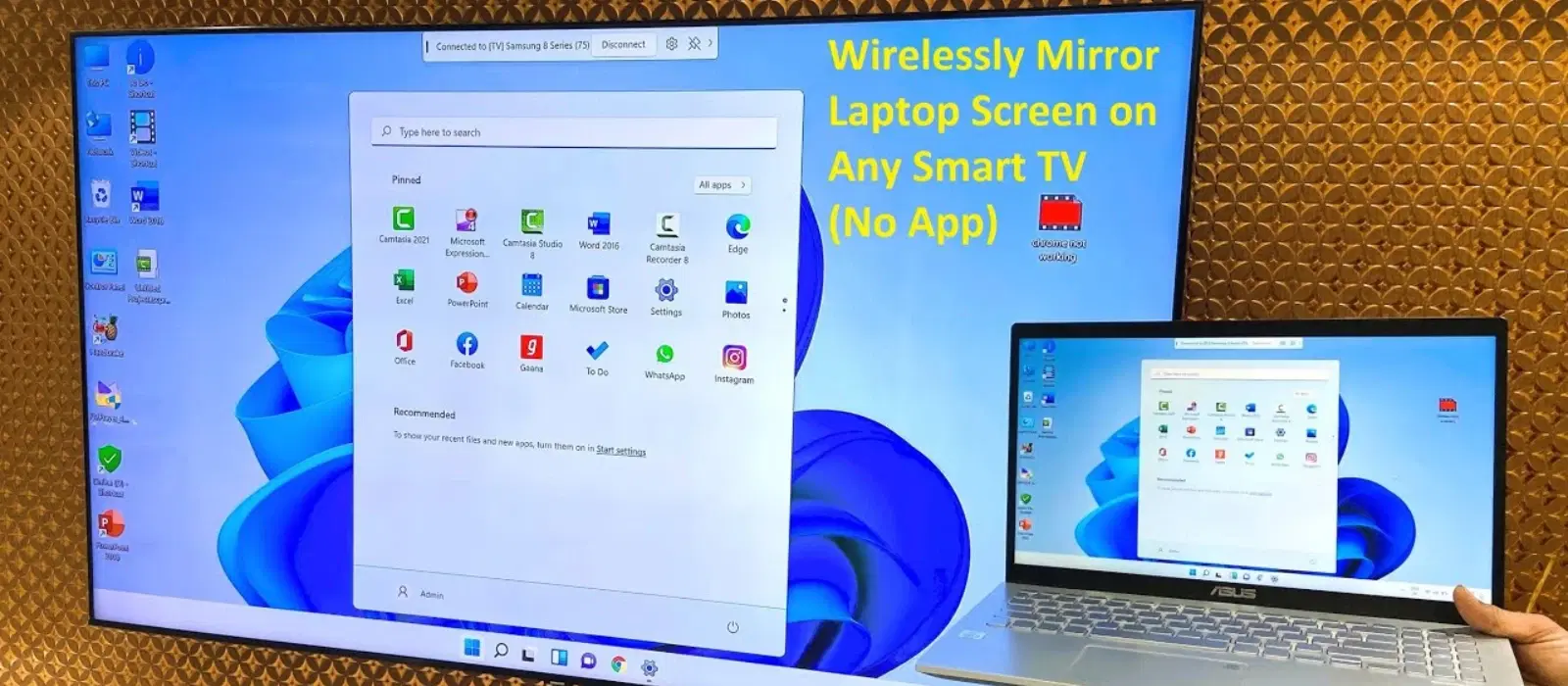
Consumer Electronics
•04 min read
Imagine transforming your laptop into a home cinema screen, sharing presentations across a large display, or even enhancing your gaming experience without the usual technical headaches. The ability to connect your laptop to a TV is a brilliant way to enjoy a larger view and improved visuals. In this guide, we explore practical tips on how connect laptop to tv through various methods that suit your needs, whether wired or wireless. By the end of our discussion, you'll be ready to enjoy seamless connectivity with crisp visuals and clear audio on your big screen.
Connecting your laptop to a TV opens up a realm of benefits including the ability to enjoy streaming your favourite movies on a large screen, share professional presentations with clarity, and boost your gaming sessions with an immersive display. It is a versatile solution to enhance entertainment and productivity alike.
There are multiple ways to enjoy your laptop display on a television. You may choose reliable wired options such as HDMI cable, VGA, USB-C or Thunderbolt, or opt for wireless methods like screen mirroring, Chromecast or Wi-Fi Direct. Remember to check if your TV is smart or non-smart to select the best compatible method for a hassle-free set up.
HDMI cables stand out as the most popular choice for laptop to TV connection as they carry both high-definition video and audio. To use this method, simply locate the HDMI ports on both your laptop and TV, connect the cable, and adjust your display settings accordingly. Should you face issues such as no signal or incorrect resolution, ensure both devices are configured correctly to achieve optimal performance.
For devices with older connectivity options, VGA can be used though it requires a separate audio connection. Similarly, modern laptops and TVs offering USB-C or Thunderbolt ports allow for efficient data transmission. In unique cases, RCA or composite cables may prove useful, though these are usually reserved for older equipment.
Did You Know? HDMI cables are widely used because they support both high-definition video and audio with minimal set-up steps, making them an ideal choice for a seamless laptop to TV connection.
Wireless methods offer great flexibility by eliminating unnecessary cables. Features like Miracast for Windows, AirPlay for Mac, or even third-party applications let you mirror your screen effortlessly. Enabling mirroring on both your laptop and TV is simple, and with a few clicks, you can enjoy an extended display for streaming, gaming, or presentations.
Devices like Chromecast allow you to cast your laptop screen wirelessly, turning your TV into an impressive streaming hub. Furthermore, many modern smart TVs support direct wireless connections for both Windows 10 and macOS owners. If your TV is equipped with Wi-Fi Direct, you can also establish a connection without needing extra gadgets.
While wireless connections ensure freedom from physical cables and offer flexibility in movement, they come with potential limitations such as lag or dependency on your Wi-Fi strength. Understanding these aspects helps you choose the best method based on your needs.
At times, HDMI ports may not be detected or there might be VGA or USB-C compatibility issues. These can be resolved by checking the cable order, ensuring a secure connection, or updating your device drivers. In the case of older ports, confirming hardware compatibility can also help fix the problem.
If you experience lag during screen mirroring or failure to connect, try optimising your Wi-Fi performance by reducing interference or relocating devices to improve reception. Restarting devices and updating software can also resolve common issues and restore a stable connection.
For consistently smooth performance, keep your device drivers updated, verify the settings on both your laptop and TV, and test the connection with different devices. These small steps ensure that your laptop display on TV is seamless every time.
Adjust your resolution settings to match the display capabilities of your TV for a sharper image. Similarly, configure audio settings to enjoy immersive sound quality, particularly important when watching movies or streaming videos.
Ensure that both your laptop and TV are positioned to maximise Wi-Fi signal strength. For the most stable connection, consider using an Ethernet connection for your internet speed if you are streaming content wirelessly.
Pro Tip: For the smoothest wireless laptop-to-TV connection, ensure your laptop and TV are on the same Wi-Fi network and are close enough to avoid any signal interference.
Simply connect your laptop to the TV using an HDMI cable or enable screen mirroring or wireless casting based on your device's compatibility.
Alternative methods such as VGA, USB-C, or wireless options like Miracast, Chromecast, and AirPlay can be used to connect your laptop to the TV.
You can connect your TV to your laptop via an HDMI cable or use streaming apps that support laptop playback to enjoy your favourite channels.
Enable the screen mirroring feature on both your laptop and TV, or use wireless devices like Chromecast to cast the screen.
Activate the screen mirroring setting on your TV and laptop, and follow the prompts to establish a smooth connection.
In summary, configuring the connection between your laptop and a TV can transform everyday digital experiences into enjoyable, larger-than-life moments. Whether you rely on a robust HDMI cable or prefer the modern convenience of wireless options, these expert tips help you achieve a seamless laptop display on TV. Enjoy the additional rewards and benefits, like earning NeuCoins each time you utilise your tech savvy with platforms such as Tata Neu, known for its trustworthiness and customer-first approach. With these insights, you are now well-equipped to select the method that best suits your digital needs while optimising both visual clarity and audio precision.